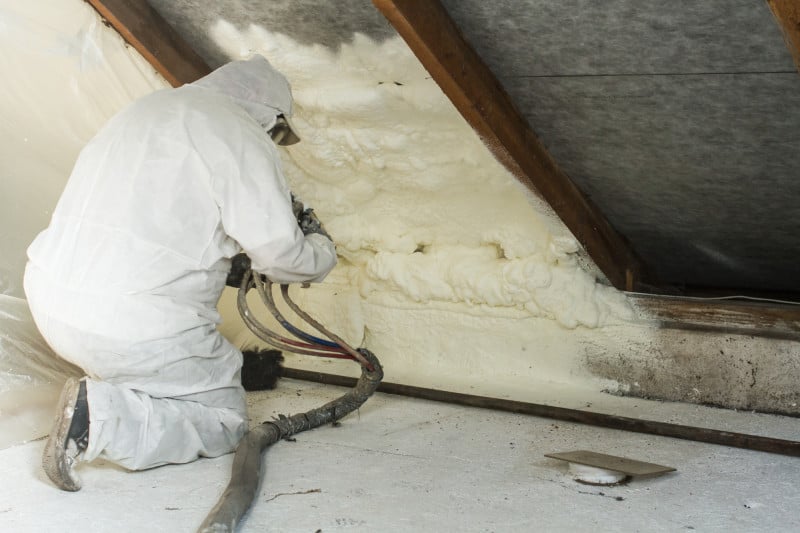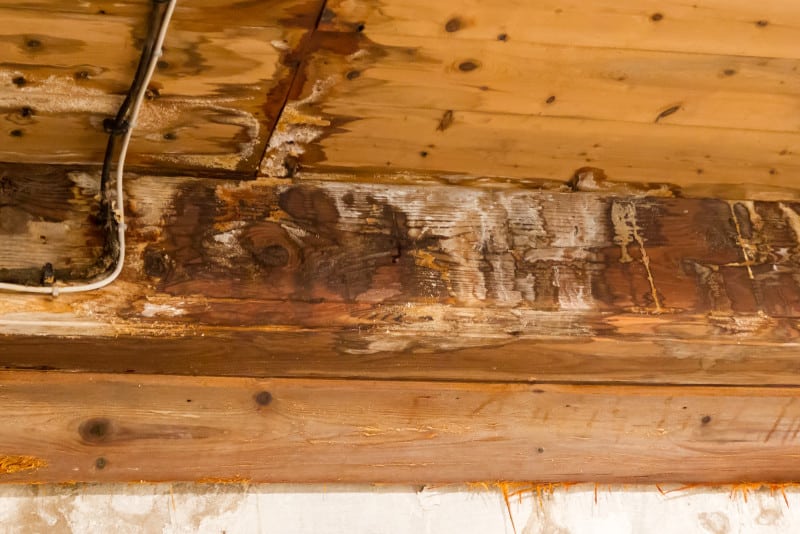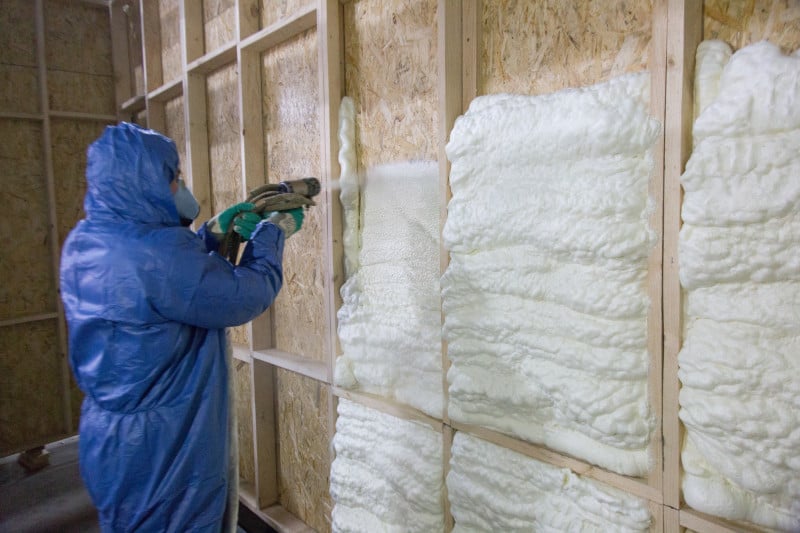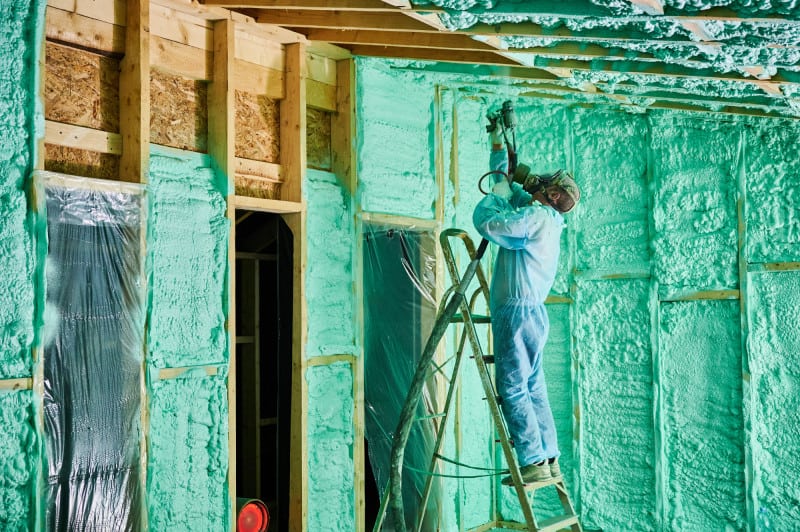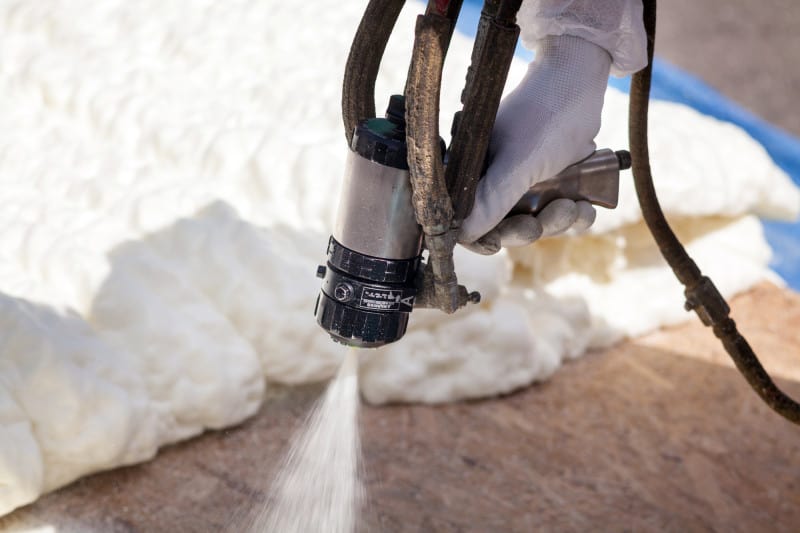Spray foam insulation has become increasingly popular due to its superior insulating properties and energy efficiency?
However, with the benefits of spray foam insulation comes a concern for safety.
As a homeowner or contractor, it’s important to understand the fire safety characteristics of spray foam and the factors that influence its flammability.
When I was looking into spray foam, one of the most important questions I had was is spray foam flammable?
Spray form can be flammable due to the presence of volatile substances that can easily ignite when exposed to an ignition source like flames or sparks.
According to the National Institute of Standards and Technology (NIST), one in four fires in residential buildings is caused by electrical distribution and lighting equipment.
This statistic highlights the importance of fire safety measures in the home, including the proper installation and use of insulation materials like spray foam.
By understanding the risks and taking necessary precautions, you can ensure the safe and efficient use of spray foam insulation in your home or building project.
Fire Safety Characteristics of Spray Foam
One of the key factors that determine the fire safety of spray foam is its heat resistance.
Spray foam insulation is made up of two components that react chemically to create a foam-like substance.
The foam is then applied to walls and ceilings to create a thermal barrier that reduces heat transfer.
However, if the temperature of the foam exceeds its heat resistance, it can ignite and cause a fire.
This is why it’s important to ensure that the foam is installed correctly and that the manufacturer’s guidelines are followed.
To improve the fire safety of spray foam insulation, many manufacturers add fire retardants to the foam during production.
These fire retardants are designed to slow down the spread of fire and reduce the flammability of the foam.
However, it’s important to note that even with the addition of fire retardants, spray foam insulation is still flammable and can ignite under certain conditions.
It’s important to keep all ignition sources away from the foam and to ensure that the foam is installed correctly to minimize the risk of fire.
Factors Influencing the Flammability of Spray Foam
You cannot underestimate the importance of understanding the combustibility of spray foam insulation, as there are numerous factors that can contribute to its susceptibility to catching fire.
The chemical composition of the foam, the ignition temperature, and the material thickness are all crucial factors that can influence the flammability of spray foam insulation.
The chemical composition of the foam plays a critical role in determining its fire resistance. Some spray foam insulation products are made with fire retardants, which can help to prevent or delay the spread of flames.
Other types of spray foam insulation may not contain fire retardants, making them more vulnerable to catching fire.
The ignition temperature of spray foam insulation is another important factor that can influence its flammability.
Spray foam insulation with a higher ignition temperature is less likely to catch fire than foam with a lower ignition temperature.
The thickness of the material can also impact its flammability.
Thicker foam insulation may be more resistant to catching fire than thinner foam, as it provides a greater barrier between the flames and the surface it is applied to.
Fire Safety Measures and Regulations for Spray Foam Applications
Ensuring fire safety when using spray foam insulation involves adhering to strict regulations and implementing preventative measures.
One of the most important fire prevention measures is following building codes.
These codes set out the minimum requirements for the use of spray foam insulation, including the minimum thickness of the insulation and the type of protective clothing that must be worn by workers during installation.
Failure to comply with these codes can lead to serious fire hazards and other safety risks.
In addition to following building codes, it’s also important to implement other fire safety measures when using spray foam insulation.
This includes wearing appropriate protective clothing, such as gloves and respirators, when working with the insulation.
It’s also important to have an emergency response plan in place in case of a fire. This plan should include clear instructions for workers on how to safely evacuate the building and contact emergency services.
Despite the potential fire hazards associated with spray foam insulation, it also provides a number of important benefits as an insulation material.
For example, spray foam insulation is highly effective at reducing energy costs and improving indoor air quality.
By taking the necessary precautions to ensure fire safety, it’s possible to reap the benefits of spray foam insulation while minimizing the risk of fire hazards and other safety risks.
Comparing the Flammability of Different Types of Spray Foam
You’ll be surprised at the vast differences in how various types of insulation react to fire. When it comes to spray foam insulation, open cell and closed cell foams have different flammability characteristics.
Open cell foam is more prone to ignition and has a slower burn rate than closed cell foam. Closed cell foam, on the other hand, is less likely to ignite and has a faster burn rate.
Aside from flammability, another factor to consider when choosing between open cell and closed cell spray foam insulation is their thermal conductivity and R value comparison.
Closed cell foam has a higher R value and lower thermal conductivity than open cell foam, which means it provides better insulation and can save you more money in the long run.
However, open cell foam is more flexible and easier to install, making it a popular choice for DIY projects.
No matter which type of spray foam insulation you choose, it’s important to follow proper installation techniques to prevent any fire hazards.
This includes ensuring that the foam is fully cured before allowing any ignition sources near it, and avoiding any contact with electrical wires or outlets.
By taking these safety measures, you can enjoy the benefits of spray foam insulation without any flammability concerns.
Tips for Safe Handling and Storage of Spray Foam Products
To handle and store spray foam products safely, make sure to keep them in a cool, dry place away from any heat sources or flames.
Foam insulation is highly flammable and can ignite easily, so it’s important to take precautionary measures when handling and storing it.
Always wear protective gear such as gloves, safety glasses, and a respirator when working with spray foam products.
When storing foam insulation, make sure to keep it out of direct sunlight and away from any sources of ignition, such as pilot lights, furnaces, or electrical equipment.
Do not store spray foam products near combustible materials or chemicals, such as gasoline or paint thinners.
It’s also important to keep the containers tightly sealed to prevent leaks or spills.
Proper handling and storage safety are crucial when working with spray foam products.
Always follow the manufacturer’s instructions and guidelines to ensure safe use. Remember to wear protective gear, keep the products in a cool, dry place away from heat sources and flames, and take precautionary measures to prevent accidents.
Conclusion
Spray foam can be flammable, but by understanding its fire safety characteristics and taking proper precautions, you can minimize the risks.
To ensure the safe use of spray foam, it’s crucial to follow fire safety measures and regulations, such as properly ventilating the area, using fire-resistant coatings, and having fire extinguishing equipment available.
Choosing the right type of spray foam for your specific application can also help reduce the risk of flammability.
Closed-cell spray foam, for example, is generally less flammable than open-cell foam due to its higher density and lower air content.
While spray foam can be flammable, the risks can be greatly minimized through proper handling and storage, following safety regulations, and choosing the right type of foam for your needs.

